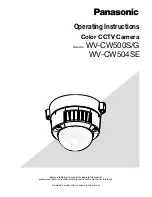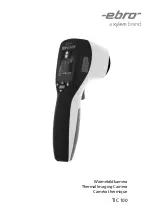
9
2.3 Deployment Site Selection
A successful screening operation begins with site selection. Select a deployment location with a natural funnel
that channels human traffic into a manageable and controlled flow. This could be a doorway or a passageway.
If such an area is not available, create a passage with barriers. As the system only screen persons facing the
camera, we recommend outgoing traffic be channeled through other paths. In order for the system to be at its
peak performance, outgoing traffic flow should bring screened persons towards system operators, disperse
only after passing them.
Ideally, persons to be screened should face the camera directly. This, however, may not be practical in many
deployment sites. You may set up the system to screen persons at an angle, but not exceeding 45 degrees.
As the system is very sensitive to heat signatures, ensure the camera is not pointing at the hot background.
These could be parking lots, roads, passing traffic or even hot windows. Failure to observe these guidelines
may result in a false alarm trigger.
If there are small areas of hot objects that cannot be avoided, use the onboard Mask function to exclude that
area or Zone function to select a specific area to screen.
As much as the system can function under a very wide environmental range, effective screening can only be
conducted in environmental temperature between 61°F - 91°F (16°C - 33°C). Extended range of up to 100°F
(38°C) is possible but may result in longer stabilization time and reduced accuracy.
2.4 Screening Considerations
The Sentry MK4 MFSS is designed to screen persons for elevated skin temperature. Therefore, consideration
needs to be given to ensure the person’s skin is not adversely affected by the external environment.
• Persons should not be screened under direct sunlight.
• Sufficient time should be provided for persons to cool down (or warm-up if the environment is cold)
• As the system cannot screen what it cannot see, sufficient areas exposing face is required.
Hair and shoulder will trap and hold heat for some time, these signatures may trigger the alarm and
cause false alert. To minimize false alert, ensure there is sufficient time to condition people coming in
from under direct sunlight.










































